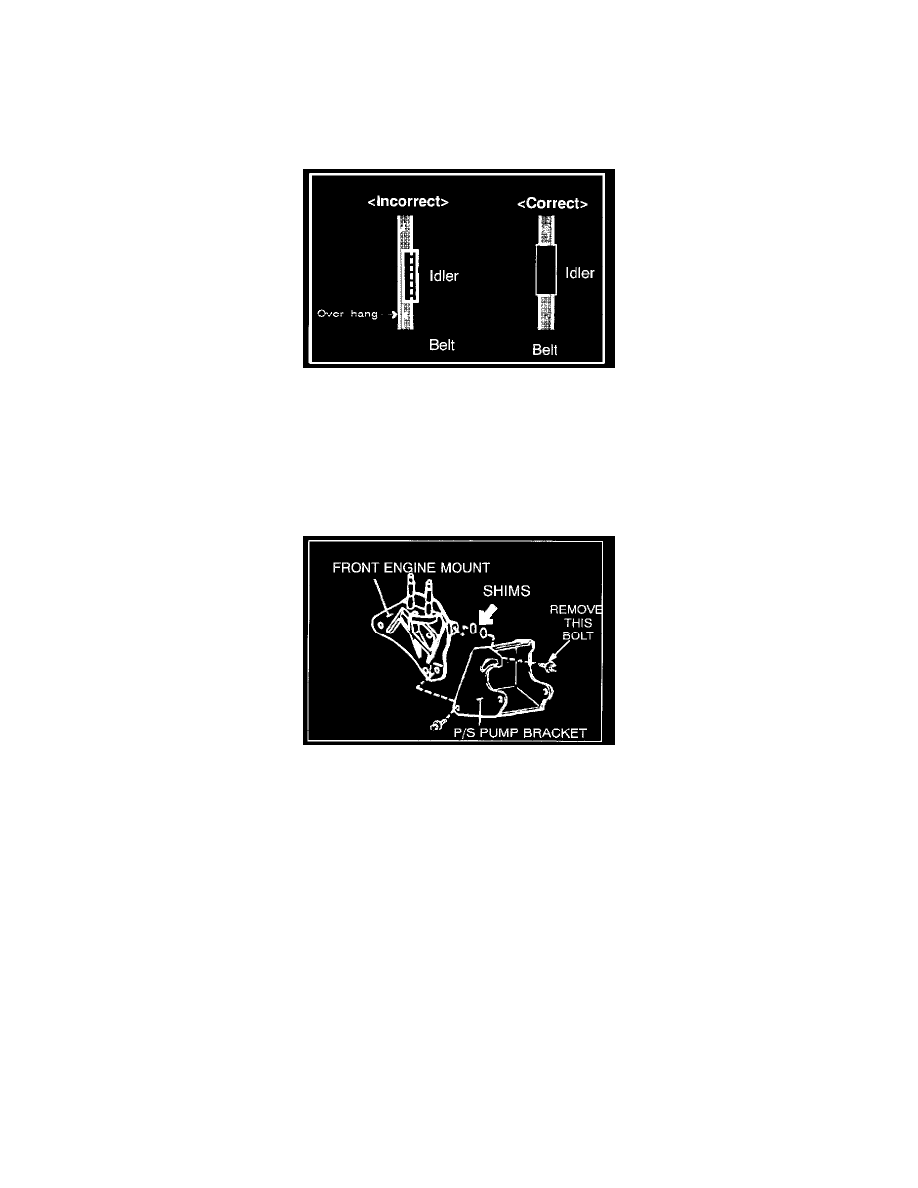Eclipse FWD L4-1997cc 2.0L DOHC MFI (1997)

The belt MUST be adjusted to the proper tension. Low belt tension may cause noise or loss of the P/S belt. Belt tension that is too high may cause
abnormal wear to the P/S pump pulley shaft bearing.
3.
After replacing the bracket, go back to the checking procedures, then proceed with the proper alignment procedures (section C in this bulletin)
based on information gathered during alignment checking.
* B. A/C Idler Tensioner Pulley Replacement (New Wider Pulley)
Vehicles With A/C Produced Before February 2, 1998 only. Replace the pulley with the new wider idler pulley (MR398887). Use the procedures in the
service manual. The wider pulley allows more surface area for the belt to ride, eliminating the chance of belt damage caused by the belt riding over the
edge of the pulley.
Note:
Vehicles produced after February 2, 1998 have the new wider pulley installed during vehicle production.
C.
Power Steering Pump Bracket Alignment
If the power steering pump pulley is out of alignment, use the following procedures to shim the power steering pump into proper alignment.
1.
Remove the bolt holding the power steering pump bracket to the front area of the engine mount. Loosen the remaining two bolts attaching the
power steering pump bracket.
2.
Add the necessary number of 1 mm shims between the pump bracket and the front engine mount so the pump is moved to where the pulley is in
alignment.
Note:
FOR BETTER PULLEY ALIGNMENT ON VEHICLES WITH AIR CONDITIONING:
a.
Move the power steering pump closer to the engine (along the adjuster slot in the power steering bracket) then tighten the upper attachment
bolt.
b.
Tighten the two lower power steering pump bolts, last.
c.
Adjust the power steering belt tension by using the idler tension pulley.
3.
Go back to the diagnosis procedures to check the belt alignment again before returning the vehicle to the customer. If necessary, install additional
shims as required to achieve proper alignment (2 mm maximum).
4.
Verify that the repair and alignment procedures were effective by test driving the vehicle under many different conditions (highway speeds, quick
acceleration, various turning situations, etc.).
